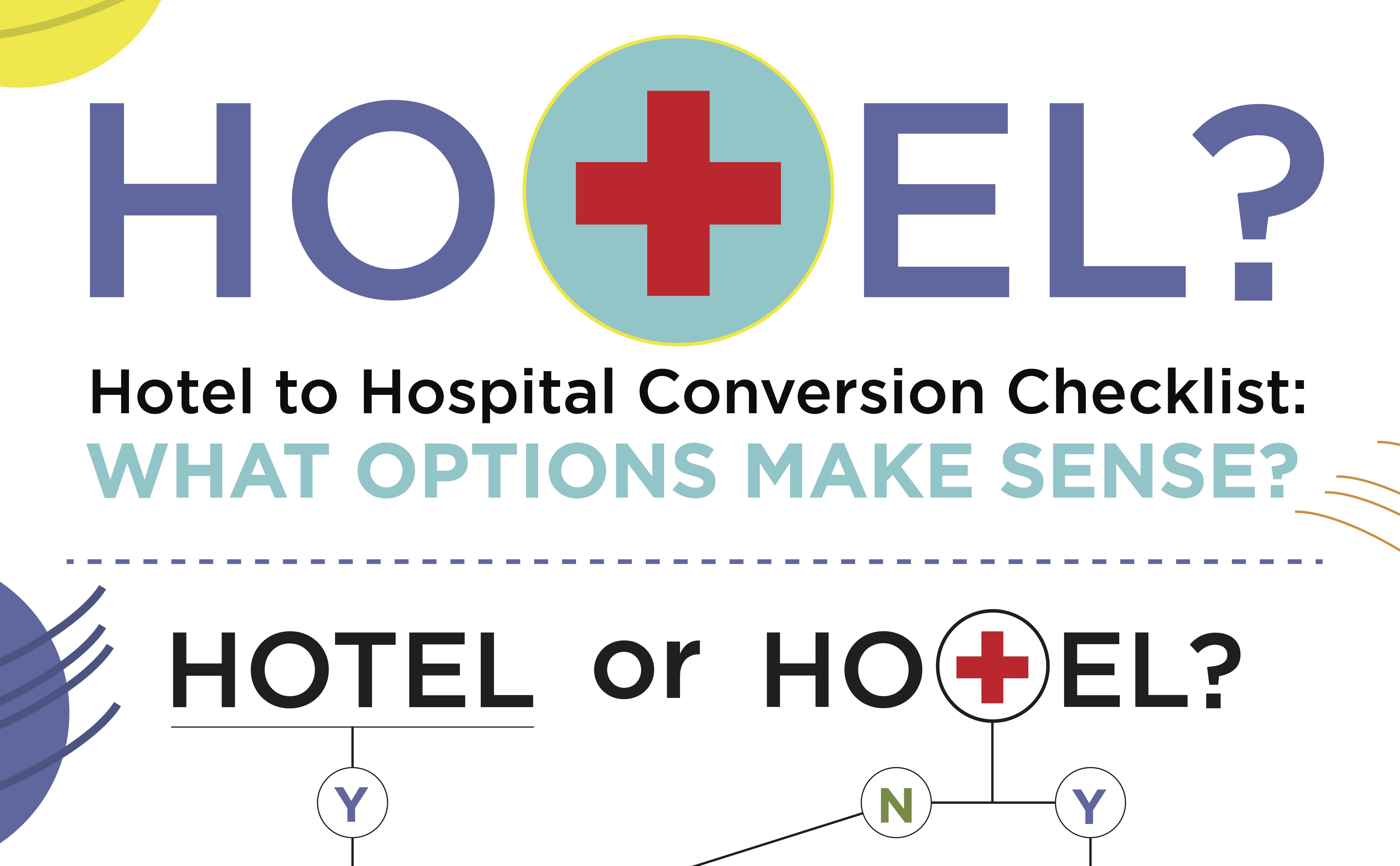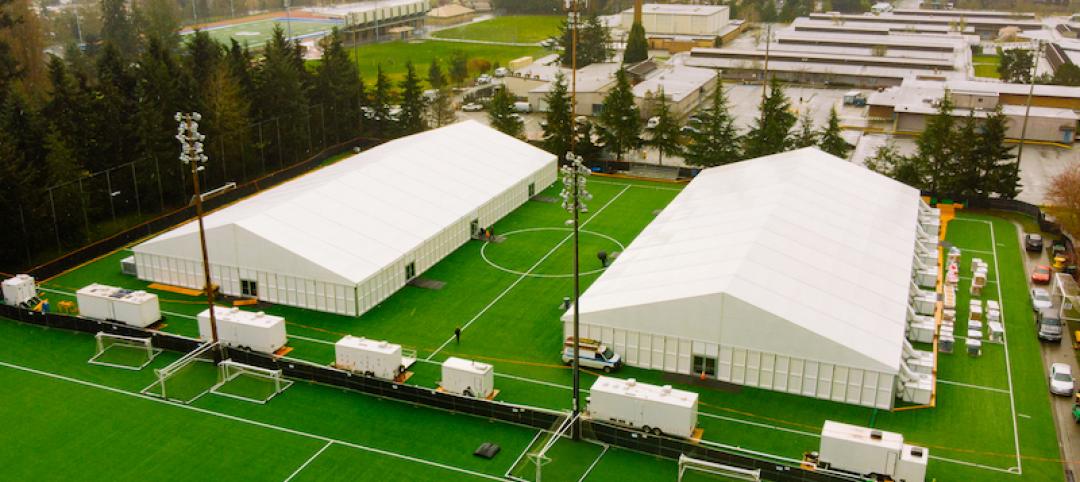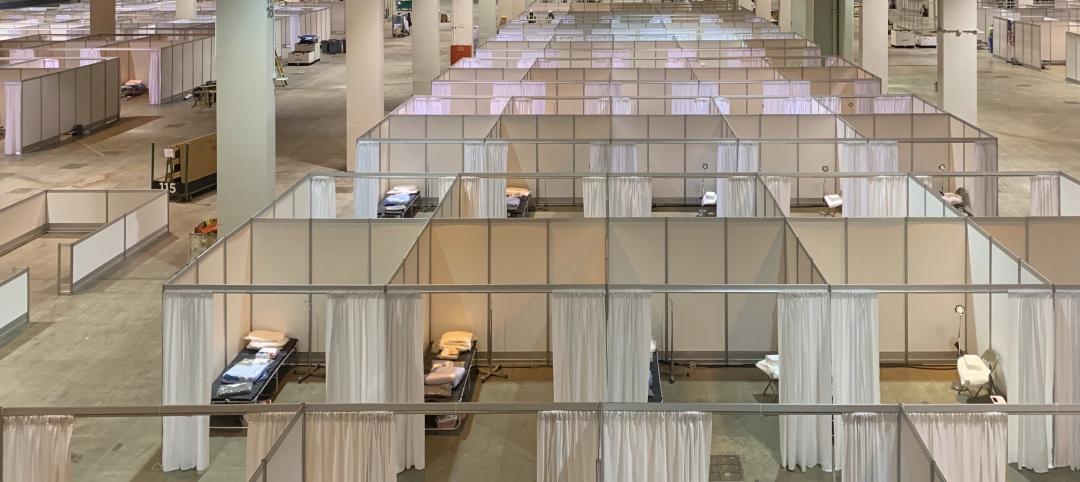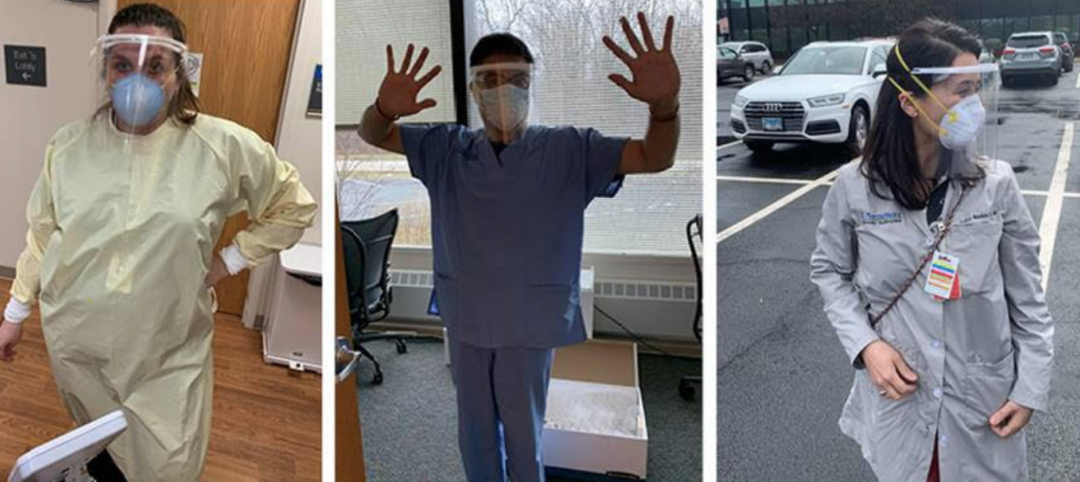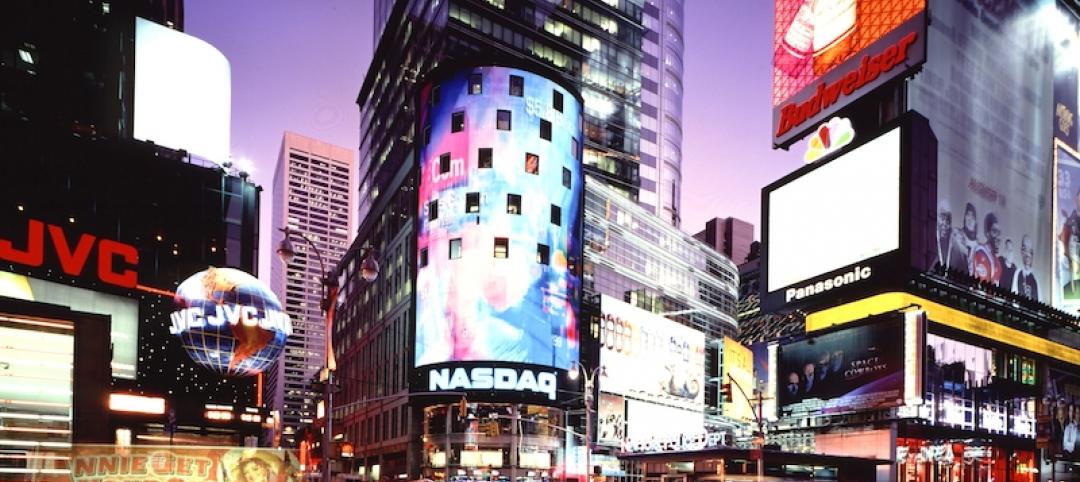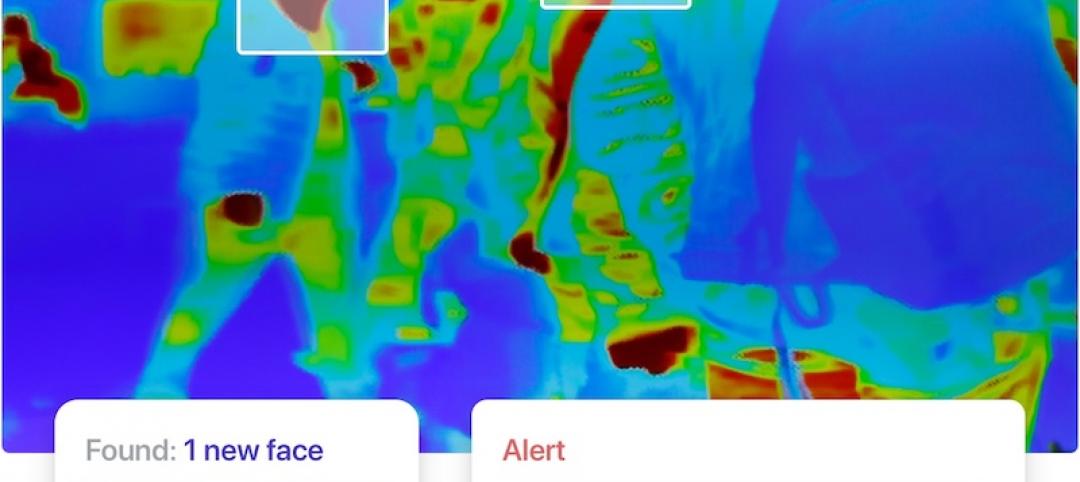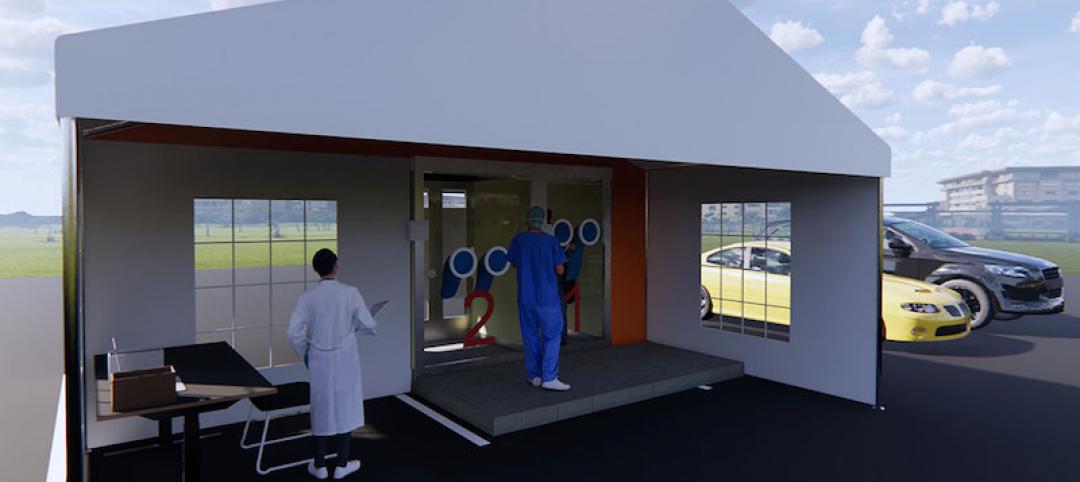The American Hospital Association estimates that the U.S. has 924,000 hospital beds, or fewer than three beds for every 1,000 people. Less than 5% of those beds can be used for intensive-care patients.
If, as Array Advisors predicts, most states will run out of available ICU beds by the middle of this month, repurposing hotels as temporary healthcare facilities becomes more viable, even necessary, by the day.
Tvsdesign, whose team is currently the design architect on the 1.2-million-sf Javits Center expansion in New York, has put together a checklist for when hotel-to-hospital conversion options make sense (see infographic below).
The firm also has analyzed three scenarios, based on patient needs and how they can be matched with available hotels.
• Scenario 1: Non-COVID-19 positive patients in recovery from surgeries/illnesses who don’t require life-support equipment. These patients could be relocated to appropriate facilities to free up hospital beds for meeting demands related to COVID-19.
• Scenario 2: Non-COVID-19 positive patients in recovery that require specialized and powered equipment.
• Scenario 3: COVID-19 positive patients in treatment.
The firm observes that some hotels will work better than others in supporting each scenario. Cleanable surfaces, mechanical and electrical systems, nurse-call devices, and handwash sinks are all factors that might need to be added to any hotel conversion.
Tvsdesign has identified hotel room types that can support these patient scenarios, ranging from 300 to 1,000 sf of space used per patient. For instance, a standard 300-sf King Suite room in a hotel might be a best-use case for Scenario 1; a 500-sf King Suite, with additional power, could support Scenarios 1 and 2. The latter suite setup, with a full kitchen, would allow family members to stay full time with patients, and allow for the patient to have an extended recovery period.
Option three would be a 600-sf standard King that could work for Scenario 3. A connecting room could be used as an ante room to maintain necessary pressure levels in the isolation room, and act as a nurse’s station. Before any conversion, the owner should consult with a mechanical engineer for adjustments to the room’s HVAC system.
Option 4, a 1,000-sf King Suite with the same setup as Option 3, also works for Scenario 3.
“Based on our analysis, we believe that hotels can easily be used to care for COVID-19 negative patients who may be in recovery and not requiring intensive care,” states tvsdesign. “The most practical and cost-effective approach is to divert patients from hospitals to hotel rooms as possible, increasing capacity within hospitals for the most critically ill patients.”
(CLICK INFOGRAPHIC TO ACCESS FULL-SIZE VERSION)
Related Stories
Coronavirus | Apr 5, 2020
King County, Wash., addresses homelessness and COVID-19 with rapid-response site conversions
The county is adding 2,500 beds within a dozen Assessment & Recovery Centers that DLR Group helped to design.
Coronavirus | Apr 4, 2020
COVID-19: Construction completed on first phase of Chicago's McCormick Place into Alternate Care Facility
Walsh Construction, one of the largest contractors in the city of Chicago and in the United States, is leading the temporary conversion of a portion of the McCormick Place Convention Center into an Alternate Care Facility (ACF) for novel coronavirus patients. Construction on the first 500 beds was completed on April 3.
Coronavirus | Apr 4, 2020
COVID-19: Architecture firms churn out protective face shields using their 3D printers
Architecture firms from coast to coast have suddenly turned into manufacturing centers for the production of protective face shields and face masks for use by healthcare workers fighting the COVID-10 pandemic.
Coronavirus | Apr 3, 2020
Cities will survive the pandemic
Density may make it easier for the virus to spread, but let’s not forget that cities are in many ways the heart of society, and a springboard of big ideas, inventions, art, and culture.
Coronavirus | Apr 3, 2020
Kogniz Health launches AI-based fever detection cameras for crowds to help limit coronavirus spread
System continuously scans crowds for fever as they enter facilities to locate and isolate risks.
Coronavirus | Apr 3, 2020
27% of construction firms report layoffs amid COVID-19 outbreak, says AGC
The fast-worsening COVID-19 pandemic has triggered layoffs at more than a quarter of construction firms responding to an online survey released today by the Associated General Contractors of America. The finding, based on responses from earlier this week, contrasts with the government’s monthly employment report for March, which found that construction employment declined by 29,000 as of mid-March.
Coronavirus | Apr 3, 2020
Test facility in a box: Modular, walk-in booth design for coronavirus testing
To address the need for testing in urban areas for those without vehicles, CannonDesign architect Albert Rhee created a walk-in testing booth that is slated for public use.
Coronavirus | Apr 3, 2020
Survey of U.S. code officials shows trends in code compliance during COVID-19
The results of the survey tell us how jurisdictions throughout the U.S. are keeping up with inspections, new building permits and new construction.
Coronavirus | Apr 3, 2020
CallisonRTKL buoyed by overseas demand
Customer service across the globe remains No. 1 priority, says new CFO.


